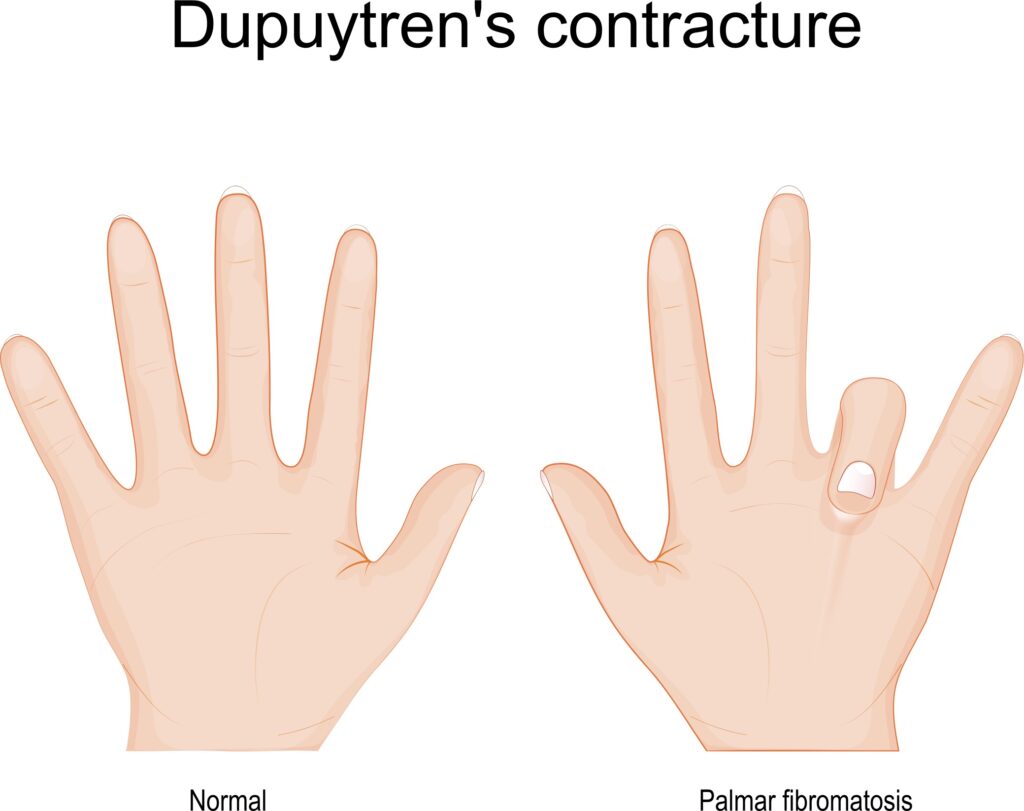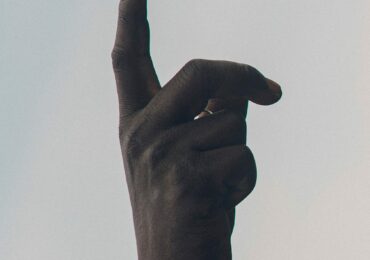Some people find it challenging to extend their fingers or open their palms fully. This is because their hands have developed Dupuytren’s contracture, which can significantly affect daily life if not caught early. Here’s what you need to know about early stage Dupuytren’s contracture symptoms and what you can do about them.
What is Dupuytren’s Contracture?
Dupuytren’s contracture, also known as Dupuytren’s disease, is a benign condition that mainly affects the ring and pinky fingers, making them bend towards the palm. This disease is more common among older males and individuals struggling with alcoholism and other medical conditions like epilepsy and diabetes.

Dupuytren’s disease occurs when painless nodules develop in the fibrous tissue under the skin of the palm. As the condition progresses, the nodules develop into fibrous cords. These cords usually radiate out to the middle and small finger, preventing you from straightening them.
In advanced stages, the disease permanently deforms the hand, affecting your quality of life. However, in many instances, Dupuytren’s contracture doesn’t progress this far, instead stabilising or even regressing.
Regardless, it’s advisable to note the early symptoms so that you can seek medical intervention in time.
Symptoms of Early Stage Dupuytren’s Contracture
This condition develops over decades, meaning it could take years to realise your hand is affected. In addition, individuals with Dupuytren’s disease rarely feel pain in the affected hand. As such, it might be too late by the time your hand shows physical signs.
Therefore, it’s essential to identify other symptoms to prevent permanent finger contraction. In addition, timely recognition of signs of early stage Dupuytren’s contracture allows your doctor to rule out other hand-deforming conditions like trigger finger.
The condition progresses through three phases, with the first two involving nodule formation and the last resulting in long-lasting contraction of the pinky and middle fingers.
Here’s what happens during early stage Dupuytren’s contracture:
- First, the tissue under the skin of the palm develops small nodules in the condition’s proliferative phase.
- At this point, you most likely won’t feel any pain in or around the lumps. However, some people feel tenderness and itchiness in the affected palm areas.
- The lumps become harder and more pronounced.
In many instances, the hard nodules stabilise and remain unchanged for years. However, in some rarer situations, the lumps regress.
Regardless, you should consult your doctor if you feel lumps developing under the skin in your palm.
Treating Early Stage Dupuytren’s Contracture
Treating this condition in the early stages could include:
- Corticosteroid injections into the nodules of individuals with painful lumps
- Collagenase (enzyme) injections into the nodules to dissolve the lumps
- Physical and occupational therapy involving heat and ultrasonic waves helps with the lumps
- Using a splint or brace to increase the fingers’ range of motion to prevent them from contracting towards the palm
In instances where the lumps have just started developing into cords, your doctor can use a needle to break up these rope-like structures before they can cause significant contracture.
When the disease progresses to significant bending of the fingers, your doctor may recommend surgery to release the cords.
If you’re suffering from Dupuytren’s contracture, book a consultation with a hand specialist at The Harley Clinic to discuss options.













